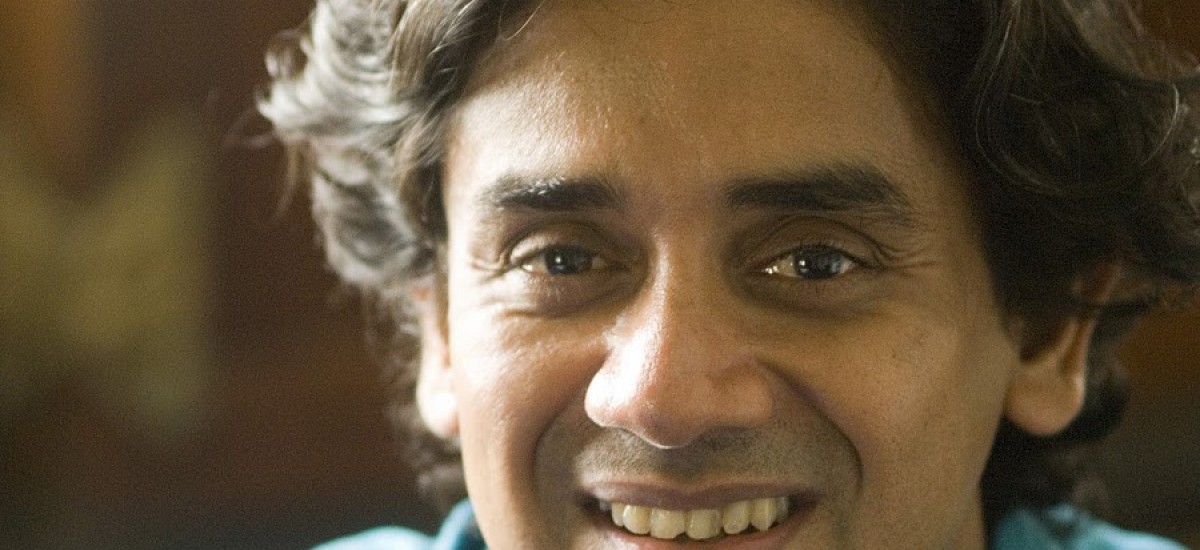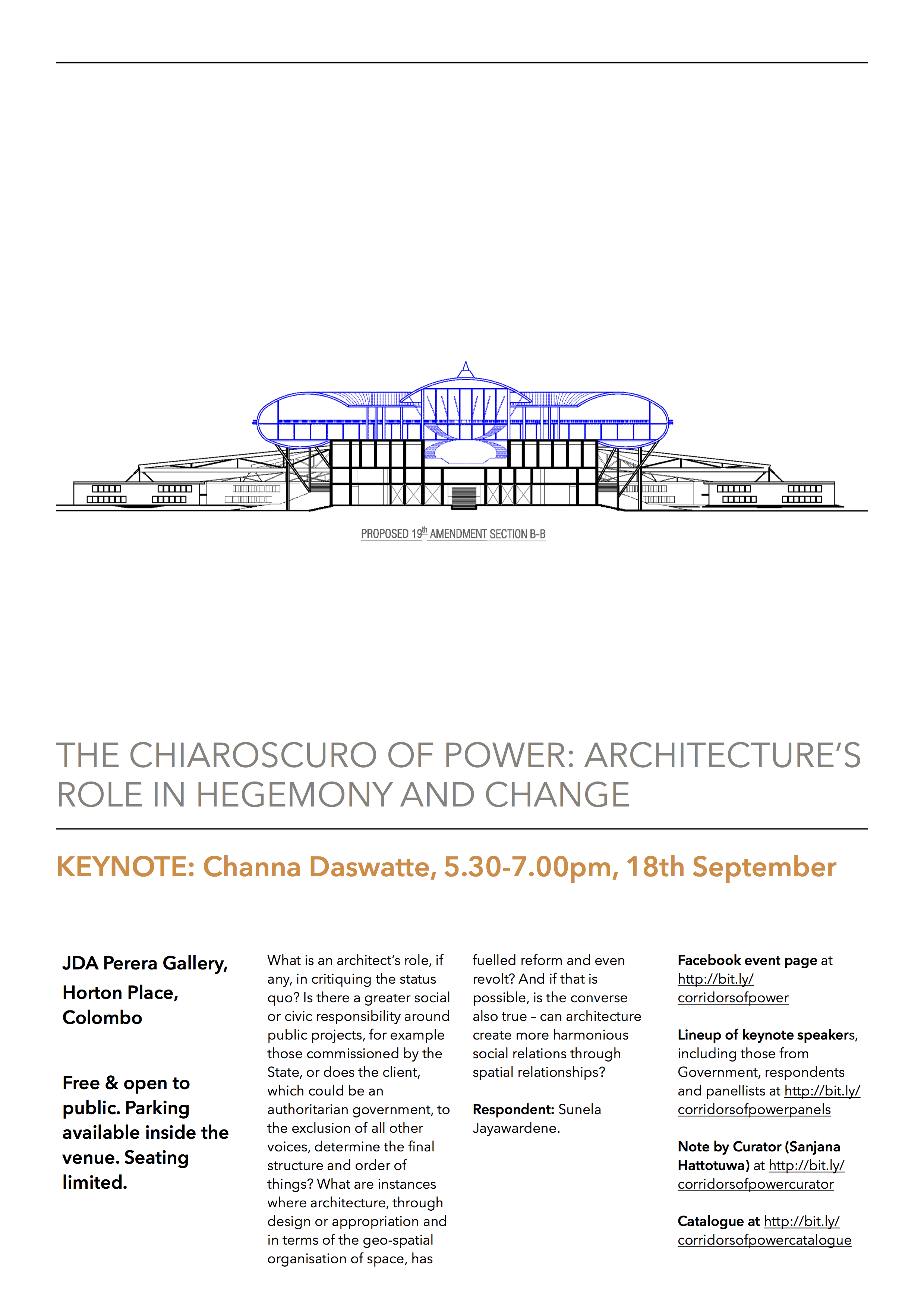KEYNOTE: ‘The chiaroscuro of power: Architecture’s role in hegemony and change’ by Channa Daswatte, 5.30-7.00pm, 18th September
JDA Perera Gallery, Horton Place, Colombo
Free & open to public. Parking available inside the venue. Seating limited.
Channa’s note on this exhibition avers that “the premise has been that architecture is essentially about creating relationships between various spaces occupied by people and thus making the potential for interaction between them.” When the Design Museum in London named world renowned Hahid’s Heydar Aliyev Centre in Baku, Azerbaijan, the winner of the Design of the Year award in 2014, critics noted that Hahid’s lack of concern over who commissioned the edifice, and who it commemorates, was deplorable. As Russell Curtis, a founding director of London-based architects RCKa, an award-winning design practice noted at the time and in response to the award, “It’s naive to believe that architecture and politics are mutually exclusive: the two are inextricably linked.”
What is an architect’s role, if any, in critiquing the status quo? Is there a greater social or civic responsibility around public projects, for example those commissioned by the State, or does the client, which could be an authoritarian government, to the exclusion of all other voices, determine the final structure and order of things? What are instances where architecture, through design or appropriation and in terms of the geo-spatial organisation of space, has fuelled reform and even revolt? And if that is possible, is the converse also true – can architecture create more harmonious social relations through spatial relationships?
Respondent: Sunela Jayawardene


